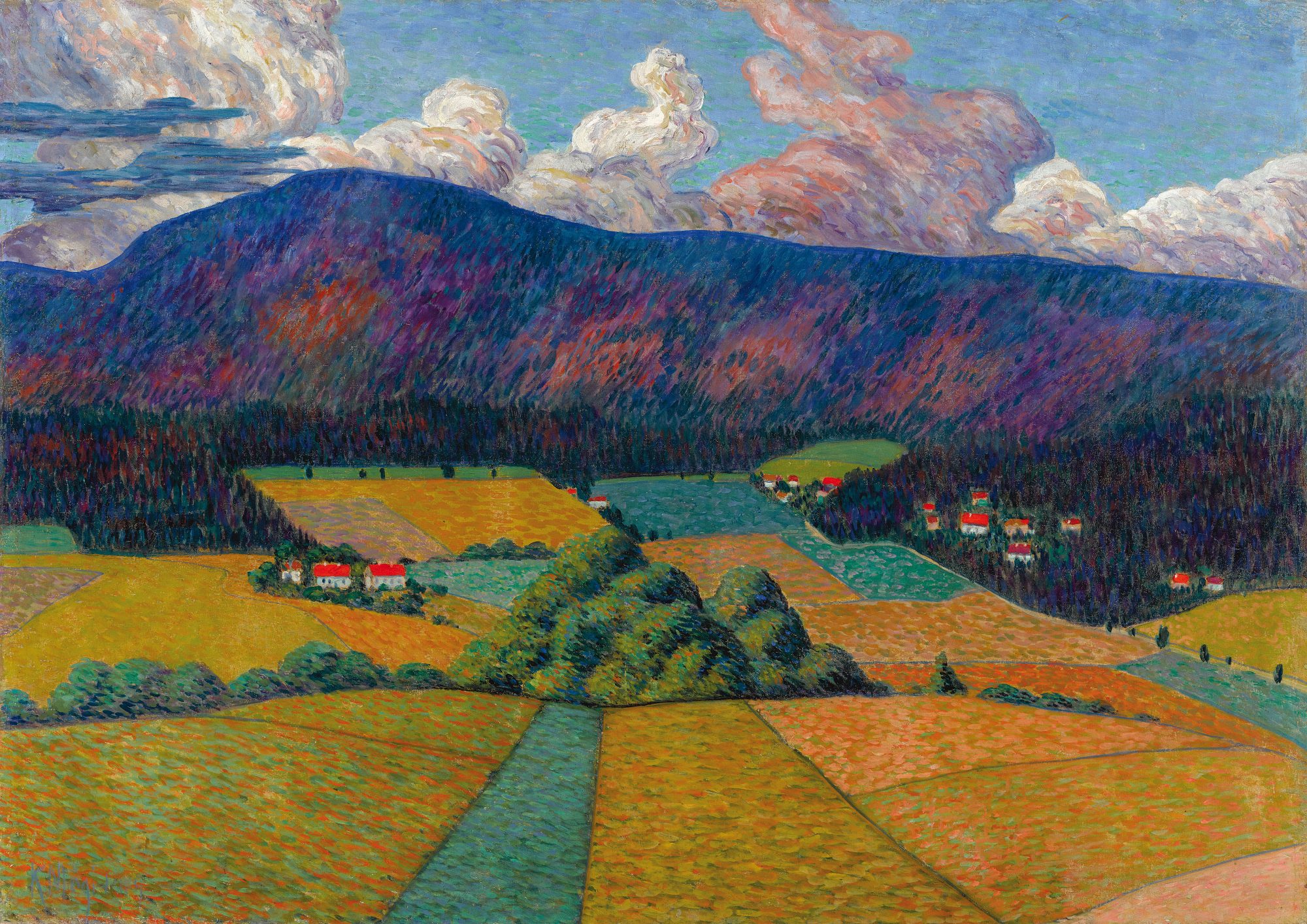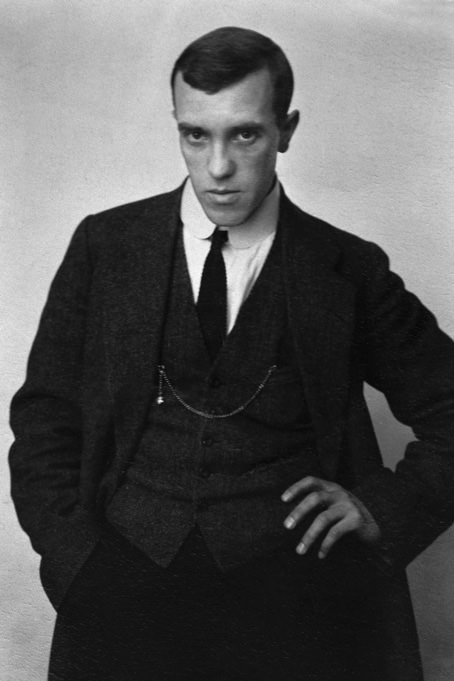

The reproduction of these works without the express written consent of the owner of the works is prohibited.
DownloadNorwegian Landscape
It is the largest of the known Norwegian paintings and the mountains in the distance could locate Mägi to the west of Oslo in a more mountainous area. Yet there are surprisingly few cliffs and mountains in his Norwegian works, considering how prominent they are there and how enraptured Mägi was by exotic landscape forms of Capri and in Oberstdorf, and even in southern Estonia where he focused on the hilly relief. “Just think: big blue mountains and red clouds roam quite high there. It got the feeling that it was precisely the place where the Gods might live,” Mägi gushed in Norway. Yet the mountains are largely omitted from his works and it is possible that even this work was not done in the true mountainous areas in the west but rather in the vicinity of Oslo.
The painting powerfully visualizes a number of the central positions of Mägi’s oeuvre: the emphasis on the metaphysical dimension, a pantheistic view of nature, with humankind and the works of man only secondary, a panoramic, epic view of the landscape. His signature style, however, is more constructed and less colourful here than, for example, in his later Saaremaa period. Also surprising is Mägi’s take on clouds. Meteorologist Jüri Kamenik argues that these cannot even be Norwegian clouds, as he says such heaps of cumulus clouds are not known to form in mountainous areas. He says that while the landscape is indeed Norwegian, the clouds are relicts of Mägi’s Estonia experience. By that time, he had been away from Estonia for six years and there are a number of different interpretations for why he returned to his childhood experiences through his paintings. It might have been a tactical move, as puffy piles of clouds are more dramatic than the strips of cloud characteristic of the Norwegian mountains and are better at evoking the theatrical sense of the sacral that fascinated Mägi. It could also have been a question of composition, as the clouds once seen in Estonia were better than Norwegian clouds at energizing the landscape and adding more emotional layers of meaning. Yet not to be overlooked is the interpretation that Mägi might have wanted to seek refuge in a home-like mental space, for he repeatedly wrote in his letters he felt stymied, lonely and in existential distress, and maybe clouds remembered from his childhood were a lifeline to peace, stability and sense of security.
The reproduction of these works without the express written consent of the owner of the works is prohibited.

